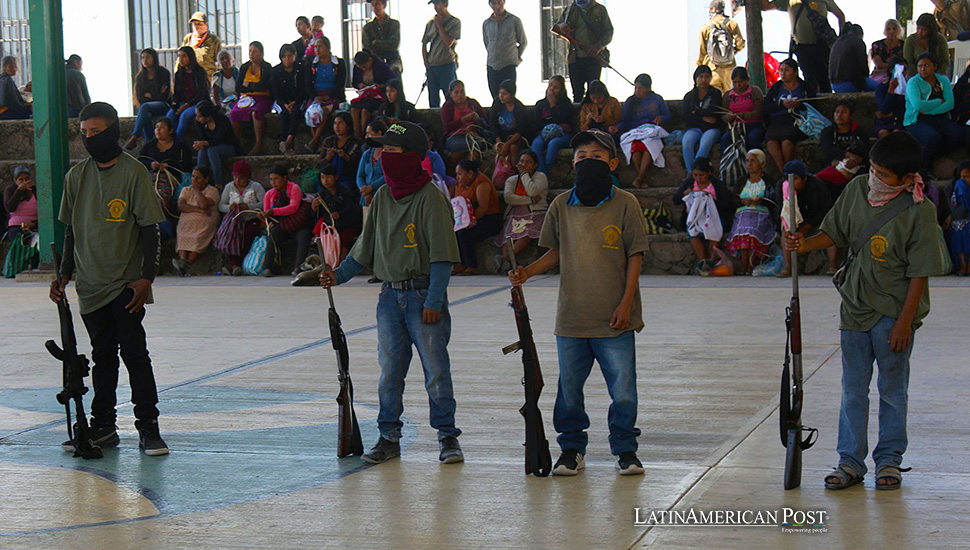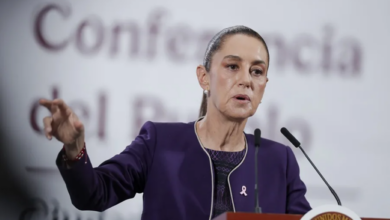Children in the Mexican State of Guerrero Armed for Self-Defense Against Organized Crime

In Guerrero, southern Mexico, children as young as 11 have been armed by a local indigenous community to safeguard their people. At the same time, adults have been searching for a family kidnapped since January 19.
A Disturbing Response to Security Crisis
In a disturbing development that underscores the depth of Mexico’s security crisis, children between the ages of 11 and 15 in the municipality of José Joaquín de Herrera, Guerrero, have been recruited and armed to protect their community. This move comes as adults in the area intensify their search for a family that disappeared on January 19. In Ayahualtempa, an indigenous community in central Guerrero, 5 girls and 15 boys were recently sworn in as members of the Regional Coordinator of Community Authorities-Founding Peoples (CRAC-PF), some wielding real firearms, others with mere reeds fashioned as rifles.
Luis Morales Rojas, a member of the CRAC-PF and the Nahuatl Government Council, stated that the older youths would join the search for the four kidnapped family members. In contrast, the others would perform surveillance duties. The children have been trained in using weapons such as .22 caliber rifles, shotguns of various calibers, and pistols.
During a community assembly attended by approximately 1,000 Nahuatl people, demands were made to Mexican President Andrés Manuel López Obrador and Guerrero Governor Evelyn Salgado for assistance in locating the kidnapped indigenous family. The missing family includes 50-year-old Cecilia Gaspar Hernández, her 52-year-old husband José Teodoro Domingo Ortiz, and their sons Roberto and Gaudencio, aged 30 and 22, who were abducted while tending their livestock.
Mission Details and Training
In the village’s sports field, the armed children, some wielding rifles and shotguns, demonstrated military training maneuvers. During an assembly, the Traditional Council of the Nahuatl Government, the Communal Land Commissioner, municipal commissioners, and the CRAC-PF made this decision to enlist minors into the CRAC-PF. It was a response to the resurgence of violence attributed to the criminal group Los Ardillos, which has been ravaging neighboring regions.
Morales Rojas condemned the actions of Los Ardillos, responsible for numerous kidnappings and killings in their community. He appealed to municipal, state, and federal authorities for support with security agents, highlighting that surrounding communities are under the group’s control.
Condemnation of Criminal Actions
Los Ardillos have plagued central Guerrero in recent years, battling other criminal factions for dominance. Following the assembly, the community authorities stressed the legality of their community police actions. They demanded respect and non-interference from governmental authorities.
They reminded the officials that the actions of the Community Police are legally recognized and backed by the Mexican Constitution, the state of Guerrero, Law 701 on Indigenous Rights and Culture, the Public Security Law of Guerrero, and ILO Convention 169.
Historical Context of Child Involvement
Children have previously been incorporated into the Community Police due to the region’s insecurity and violence. Despite repeated denunciations, there have been no assurances of safety. In June 2019, 19 children were integrated into the Community Police, and another group of minors was added in 2020. However, they were disincorporated in 2022 following a government-led meeting promising increased security through the military, National Guard, and State Police.
This situation in Guerrero reflects a broader issue in Mexico, where communities, feeling abandoned by the state, are taking security into their own hands. The involvement of children in such initiatives is a stark indicator of the desperation and severity of the security situation. It raises profound concerns about the impact on these young lives and the long-term implications for a society where children are thrust into the roles of armed protectors.
Also read: U.S. Supreme Court Allows Federal Government to Cut Texas-México Border Wire
The story of Ayahualtempa is not just a local issue but a symptom of nationwide challenges in governance, law enforcement, and the protection of vulnerable communities. It underscores the urgent need for effective and humane security strategies to restore peace and stability while respecting the rights and well-being of all citizens, especially children. As Mexico grapples with this complex crisis, the eyes of the world are watching, hoping for solutions that can bring an end to the cycles of violence and safeguard the future of its youngest generation.





